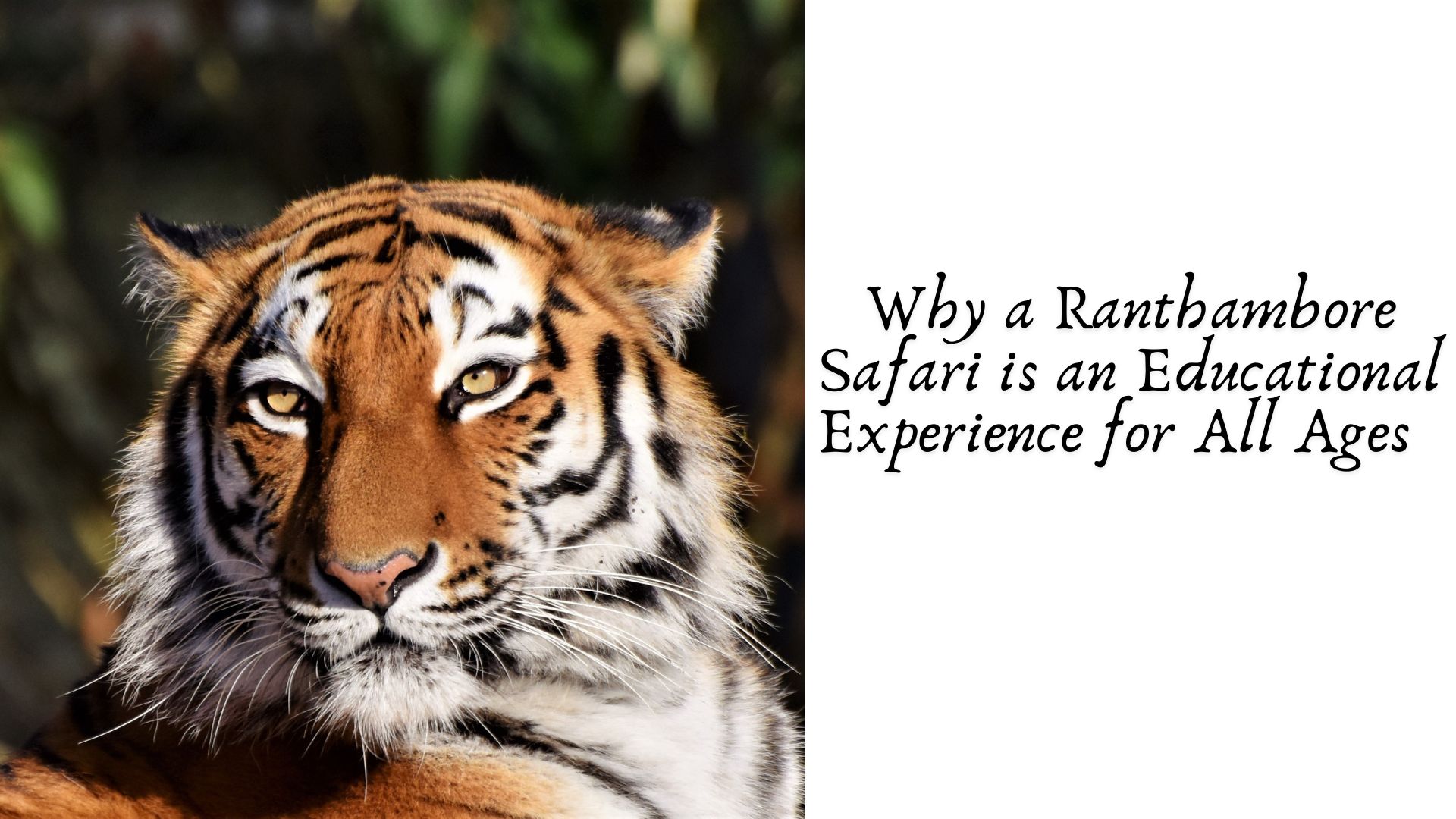Ranthambore Safari | Eye of the Tiger
A Ranthambore Safari is more than just a thrilling adventure through one of India’s most famous tiger reserves—it’s an educational experience that offers invaluable lessons for people of all ages. Nestled in the Sawai Madhopur district of Rajasthan, Ranthambore National Park is a living classroom, where nature teaches through direct experience, observation, and engagement. From the youngest children to seasoned adults, everyone who embarks on a safari here leaves with a deeper understanding of wildlife, conservation, history, and ecology.
Connecting with Nature: The Heart of Education
In today’s digital age, where screens often dominate our lives, connecting with nature has become more important than ever. A Ranthambore Safari offers a unique opportunity to step away from the virtual world and immerse oneself in the raw beauty of the natural environment. For children, this is a chance to witness firsthand the wonders of wildlife they’ve only read about in books or seen in documentaries. The sight of a tiger prowling through the forest, a peacock displaying its vibrant plumage, or a crocodile basking in the sun can ignite a sense of wonder and curiosity that no classroom can replicate.
For adults, this experience can rekindle a lost connection with the natural world, reminding them of the intricate balance that exists between all living things. It’s a powerful way to gain a renewed appreciation for the environment and the importance of preserving it for future generations.
Learning About Wildlife and Conservation
One of the most significant educational aspects of a Ranthambore Safari is the chance to learn about wildlife conservation. Ranthambore is home to a diverse array of species, including tigers, leopards, hyenas, and over 300 species of birds. The park’s knowledgeable guides provide detailed information about these animals, their behaviors, habitats, and the challenges they face in the wild.
For children and adults alike, this is an eye-opening experience that highlights the importance of protecting endangered species and their habitats. The story of the Bengal tiger, in particular, serves as a poignant lesson on the impact of human activities on wildlife populations. By observing these majestic creatures in their natural habitat, visitors can better understand the critical role of conservation efforts in ensuring their survival.
Understanding Ecosystems and Biodiversity
A Ranthambore Safari also offers a deeper understanding of ecosystems and biodiversity. The park’s diverse landscapes, ranging from dense forests to open grasslands and riverine areas, are home to a variety of plant and animal species. As visitors traverse these different habitats, they can see how each species is interconnected and how the health of the ecosystem depends on the balance between these elements.
Children, in particular, can benefit from learning about the food chain, predator-prey relationships, and the importance of every species in maintaining the health of the ecosystem. This hands-on learning experience can help them grasp complex ecological concepts in a way that is engaging and memorable.
A Journey Through History and Culture
Ranthambore is not just a wildlife haven; it’s also steeped in history and culture. The ancient Ranthambore Fort, a UNESCO World Heritage Site, sits atop a hill within the park and offers a glimpse into India’s rich past. The fort’s ruins, temples, and historical significance add another layer of educational value to the safari experience.
Visitors, especially older children and adults, can learn about the history of the fort, the battles fought there, and its role in the region’s cultural heritage. This historical context enriches the overall safari experience, providing a broader understanding of the area’s significance beyond its natural beauty.
Fostering Environmental Stewardship
One of the most important outcomes of a Ranthambore Safari is the fostering of environmental stewardship. By witnessing the beauty and fragility of nature up close, visitors of all ages are often inspired to take action to protect the environment. Whether it’s reducing plastic use, supporting wildlife conservation initiatives, or simply spreading awareness about the importance of protecting natural habitats, the lessons learned on a safari can have a lasting impact.
For children, this experience can plant the seeds of a lifelong commitment to environmental conservation. They can take the knowledge they’ve gained and apply it to their daily lives, making more informed decisions that benefit the planet.
An Educational Experience for All Ages
The educational value of a Ranthambore Safari is not limited by age. For young children, it’s a chance to learn about animals and nature in a way that is engaging and fun. For teenagers, it offers an opportunity to delve deeper into topics like ecology, conservation, and history. For adults, it’s a chance to reconnect with nature, gain new insights, and perhaps even re-evaluate their relationship with the environment.
Conclusion: Lifelong Lessons from the Wild
A Ranthambore Safari is more than just an adventure—it’s an educational journey that leaves a lasting impression on all who experience it. By exploring the natural world, learning about wildlife conservation, understanding ecosystems, and delving into the region’s history, visitors gain a wealth of knowledge that enriches their lives and broadens their perspectives. Whether you’re a child, a teenager, or an adult, the lessons learned on a Ranthambore Safari are timeless, making it an experience that benefits everyone, no matter their age.
